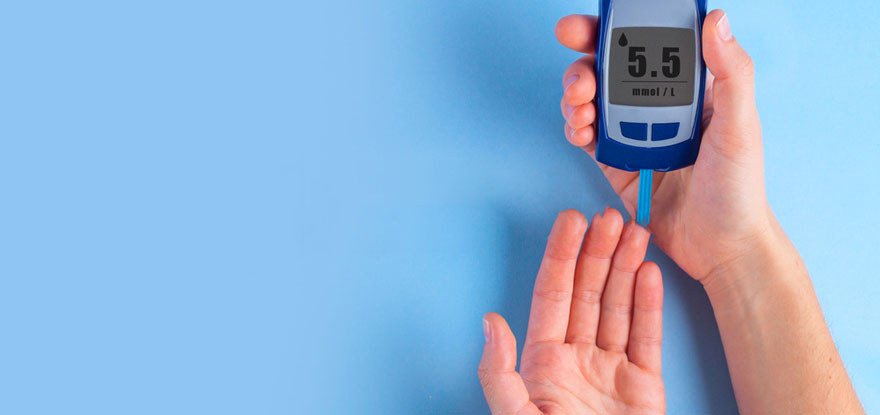All Treatments

Diabetes Mellitus I & II
Diabetes is a group of chronic metabolic diseases that are characterized by increased blood sugars level (hyperglycaemia) along with alteration of carbohydrate, protein, and fat metabolism because of insufficient secretion of insulin, insulin resistance(inability of the tissues to utilise insulin), or a combination of both.
Diabetes types: I and II are the major types of this disease.
Type I diabetes (T1D), accounts for 5-10% of all diabetic patients and develops in childhood and puberty. TID is usually caused by the damage of the insulin-producing β-cells in the pancreas due to auto-immune destruction, leading to an absolute insulin deficiency. Therefore, patients with TID require injections of insulin in order to control their blood glucose and stay alive.
Type II diabetes (TIID), is considered to be the most common type of diabetes, accounts for 90-95% of all diabetic cases and develops in adulthood. TIID is categorized by insulin resistance and comparative insulin deficiency. Patients with TIID may require insulin for control of hyperglycemia if this is not achieved with diet alone or with oral drugs or medicines to lower blood sugar.
TYPE I DM:
In TID, insulin-producing β cells become non-functional due to auto-immune destruction of these cells leading to an increase in blood sugar levels. Traditional insulin therapy supports the control of blood glucose levels but it has been reported as not very effective in the long term. Along with this, the end organ damage to the eyes, kidneys and nerves, continues to happen despite a better sugar control. Another therapy that could be used is Islet transplantation, but has limitations due to the lack of availability of pancreatic cells, cell injection, use of immunosuppressive drugs and has other complications as well.
Recently, stem cells are emerging as the best candidate for overcoming those limitations and considered as effective therapy for TID. Differentiating into mature β cells, such as from human embryonic stem cells into functional β cells, is their unique ability in the existence of specialised signals, and was reported by several researchers in vivo. Moreover, adult stem cells such as hepatic, bone marrow, and umbilical cord blood stem cells have been discovered for their potential to generate insulin- producing β cells. For instance, it was found that human hepatic stem cells differentiated into insulin-producing β-like cells and were used to overcome the condition of hyperglycemia. Thus, the application of stem cells to induce the regeneration of insulin-producing cells is successful and its potential as TID therapy is promising.
Various modalities have been used to inject the stem cell (usually MSC), either directly into the pancreatic artery via a catheter or in the pancreatic bed, laparoscopically. Though it is still experimental, in select few patients, it has shown promising results.

Type II DM
In TIID, insulin resistance and a decrease in insulin production are the causes of high blood sugar. Traditional therapy includes the use of oral hypoglycemic drugs and external insulin. However, the regular use of these drugs and insulin cannot cure this disease and prevent its complications. Although a promising therapeutic approach of transplantation of islet cells, this approach is not common due to the lack of donors, ethical conflict, and risk of immunogenicity.
Though medicines form the baseline for all treatments in Type II DM, surgery (Metabolic Surgery for DM) has resulted in complete resolution in select few and cessation of insulin therapy in most patients!
SCT may also be used as an adjunct to medical/surgical therapy and may prove to have superior results when used together. The MSC can be directly injected at the pancreatic bed during the surgery and has shown better outcomes overall, as compared to monotherapy.
Opening Hours
- Monday - Saturday: 10:00 am to 18:00 pm

